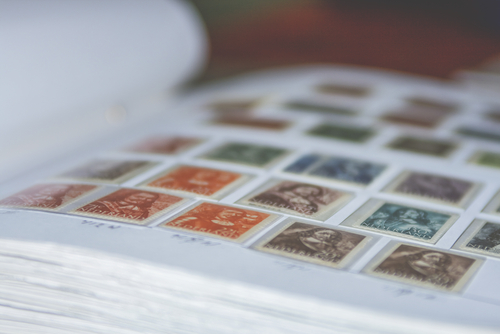Experienced Investor
Nerd do well; could stamp investment be the future?

Yesterday, the Penny Black – the world’s first stamp – celebrated its 175th birthday. The historic stamp – of which only a minute fraction of the original 86m run survive today – has long been treasured by dedicated stamp collectors, and with good reason; an unused, pristine condition Penny Black can sell for up to £1m.
While philatelism has steadily declined as a hobby in the UK over past decades, the value of stamps – as evidenced by data from auction houses the world over – is increasing. Last June, the world record price for a stamp sold via auction was broken when a British Guiana 1-cent Black stamp was sold at a Sotheby’s New York auction for £6.23m. Demand for rare stamps is now a worldwide phenomenon, with the ever-growing middle classes in key emerging markets such as India and China helping drive an international surge.
However, while that’s great news for hoarders, could it translate into returns for investors?
Keith Heddle, managing director of Stanley Gibbons Investments, seems to think so.
“By investing in such an iconic stamp you’re not just buying a slice of history – you’re investing in a tangible asset with a history of performance,” Heddle says.
Heddle’s view is supported by independent data. Stanley Gibbons publishes two rare stamp indices – the Bloomberg listed GB30 and GB250 – and both have recorded 10-year compound annual growth rates of 9.06 per cent and 11.78 per cent, respectively. The GB250 has recorded an overall compound annual growth rate of 13.4 per cent since 1991, without a single dip; no other asset class offered such levels of consistency or stability in the same period. The GB30 Index records a compound annual growth rate of 10.1 per cent over the last four decades years.
The limited number of ‘investment-grade’ stamps available accounts for the rise in stamp prices; furthermore, the lack of correlation between stamps and other asset classes means that growth in stamp value has stayed dependably solid even during periods of severe economic downturn. For instance, in 2008 – the year of the financial crisis – the GB30 Index rose 38.6 per cent.
Heddle recommends that investors use stamps to preserve the capital they have accumulated over the years. Such a resistant vehicle could be invaluable at a time like this, when the traditional capital preservation assets of gilts and cash offer virtually non-existent returns.
“We’re entering a new era, where stamps will overwhelmingly be viewed as investible, rather than simply collectible,” Heddle believes.
“Nevertheless, there are still two kinds of stamps; collectible stamps and ‘investment grade stamps’. Collectible stamps are, as their name implies, accumulated by philatelists as a pastime; ‘investment grade’ stamps are rare, have been identified as having the potential to grow in value, and are sought by investors.”
Heddle says that stamp investors come from all walks of life. “Entrepreneurs, pensioners, businesspeople, the curious, the canny, the adventurous and the cautious” are all drawn to stamps for the returns and security they can provide.
While there may be no ‘typical stamp investor’, in Heddle’s experience stamps typically account for 10 per cent of an investor’s overall portfolio, with an average minimum investment of around £10,000 – although some investors have placed millions in stamps. Famously, Bill Gross, co-founder of the £184bn PIMCO fund, is the owner of one of the world’s largest stamp collections; Gross purchased £1.65m worth of rare stamps in 2000, and sold them seven years later for £6m.
For those interested in stamp investment, Heddle has some general recommendations.
“Only invest in stamps where there is a small number of surviving examples, or where they are unique – and only invest in the best-quality examples, where authenticity can be proven through documented history. Furthermore, as with any other market, collectors drive prices – so only invest in the stamps which boast a decent number of collectors. Finally, don’t neglect the standard value-investment principle of buying as cheaply as possible wherever possible.”
Heddle does, however, gently advise against going it entirely alone; the market is rife with fakes and con artists, and purchases should be made through reputable dealers and auction houses.
